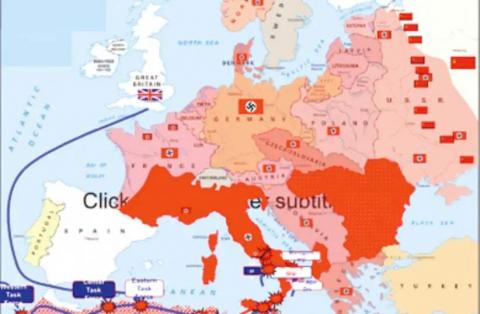Today, it is difficult to visualize the Arab countries of Tunisia, Algeria and Morocco as part of France during the Shoah.
Thus, Europe’s French possessions, called “Overseas France,” were part of Europe. Hitler defined Europe as “the European nations and their colonies.” The European Holocaust Research Infrastructure appropriately states the Holocaust occurred in “Europe, including the North African colonies.”
Indeed, following the 1940 French-German armistice, Field-Marshal Henri-Philippe Pétain, the head of the new French Vichy regime, governed the southern part of France and French North Africa as unoccupied territories, while most of the northern part of Metropolitan/continental France came under direct German military administration.
Yad Vashem and the United States Holocaust Memorial Museum acknowledge that French North Africa was an integral part of Vichy France. Therefore, during the Shoah in France, 700,000 Jews (300,000 in metropolitan France and 400,000 in Vichy North Africa) came under the German sphere of influence, because Pétain decided to collaborate with Hitler.
“In the name of France and state antisemitism,” and to solve “the Jewish question,” collaborationist Pétain enacted two antisemitic Statut des Juifs (October 1940 and June 1941) to be applicable not only in metropolitan France, but also in Vichy North Africa – one people, one destiny.
Persecuted by the same pro-Nazi ruler, the Vichy Jews living on France’s both sides of the Mediterranean Sea suffered the same fate. They were identified, counted, ostracized, isolated, systematically discriminated, objectified, diabolized and deprived of their civil rights and property – the preparatory measures that laid the foundation for an annihilation. The bureaucracy and the machinery to implement the “Final Solution” were set for them.
In the fall of 1942, US Gen. Dwight D. Eisenhower, supreme commander of Allied forces in Europe, planned Operation Torch, and wrote the story in his memoir Crusade in Europe. On November 8, 1942, Operation Torch began. US and British forces landed on the beaches of Vichy North Africa, and fought against Vichy France forces. “Underground resistance forces staged a coup d’état in Algiers and were able to neutralize the French XIX Army Corps.... Of the 377 participants in the coup, 315 were French Jews.”
On November 9, the Allied landings triggered the invasion of Vichy Tunisia by Hitler’s forces. An Einsatzkommando unit (an SS task force, a unit of the Einsatzgruppen mobile killing squads in charge of annihilating Jews) led by SS commander Walter Rauff, who was responsible for the murder of Jews in Nazi-occupied Eastern Europe using mobile gas vans, also entered Tunis, prepared to continue to implement the “Final Solution,” started by Vichy France.
He was empowered to “take executive measures against the civilian population” – Nazi jargon for robbery, murder and enslavement.” During its six months of occupation, the ruthless Nazi regime forced the creation of local Judenrat, and imposed antisemitic policies, including fines, confiscation of property and the forced wearing of the yellow badge by Jews. More than 5,000 Jews were sent to forced labor camps.
On November 10-11, US officials, acting on president Franklin Delano Roosevelt’s orders, negotiated a deal with Adm. Jean François Darlan, Vichy high commissioner for France in North Africa, for the cessation of Vichy resistance. As a consequence, Algiers became the new capital of France, and about 310,000 Jews were about to be liberated.
The Jews of French Morocco celebrated their freedom by reading “Megillat Hitler.” That megillah describes the rise of Hitler, his deadly plan to deport all the Jews in Vichy North Africa to the death camps, and how that plan was foiled because of Roosevelt (Persian King Ahasuerus). Today, one can see Megillat Hitler displayed at the United States Holocaust Memorial Museum in Washington.
In May 1943, the Allies involved in Operation Torch liberated the 100,000 Jews of Nazi-occupied Vichy Tunisia, where 260 are known to have died in the forced labor camps. So, like the Jews of Denmark, who were evacuated to neutral Sweden, a total of about 400,000 Jews were spared the deadly mass deportations that took place in the rest of Nazi-occupied Europe, because of Operation Torch.
Today, the Jews of the French protectorates of Tunisia and Morocco, and of the three departments of French Algeria, who suffered during Nazi occupation of France, receive Holocaust compensation payments, just as the Jews of mainland France do.
The author is a specialist of the Shoah in France. She is a member of the advisory board of H-Holocaust, an international academic consortium/H-Net’s network for scholars of the Holocaust.

